May 11, 2007
Sherry Turkle
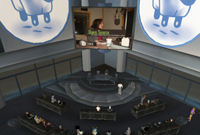
Can You Hear Me Now?
"Thanks to technology, people have never been more connected--or more alienated.
I have traveled 36 hours to a conference on robotic technology in central Japan. The grand ballroom is Wi-Fi enabled, and the speaker is using the Web for his presentation. Laptops are open, fingers are flying. But the audience is not listening. Most seem to be doing their e-mail, downloading files, surfing the Web or looking for a cartoon to illustrate an upcoming presentation. Every once in a while audience members give the speaker some attention, lowering their laptop screens in a kind of digital curtsy.
In the hallway outside the plenary session attendees are on their phones or using laptops and pdas to check their e-mail. Clusters of people chat with each other, making dinner plans, "networking" in that old sense of the term--the sense that implies sharing a meal.
But at this conference it is clear that what people mostly want from public space is to be alone with their personal networks. It is good to come together physically, but it is more important to stay tethered to the people who define one's virtual identity, the identity that counts. I think of how Freud believed in the power of communities to control and subvert us, and a psychoanalytic pun comes to mind: "virtuality and its discontents."
The phrase comes back to me months later as I interview business consultants who seem to have lost touch with their best instincts for how to maintain the bonds that make them most competitive. They are complaining about the BlackBerry revolution. They accept it as inevitable, decry it as corrosive. Consultants used to talk to one another as they waited to give presentations; now they spend that time doing e-mail. Those who once bonded during limousine rides to airports now spend this time on their BlackBerrys. Some say they are making better use of their "downtime," but they argue their point without conviction. This waiting time and going-to-the-airport time was never downtime; it was work time. It was precious time when far-flung global teams solidified relationships and refined ideas.
We live in techno-enthusiastic times, and we are most likely to celebrate our gadgets. Certainly the advertising that sells us our devices has us working from beautiful, remote locations that signal our status. We are connected, tethered, so important that our physical presence is no longer required. There is much talk of new efficiencies; we can work from anywhere and all the time. But tethered life is complex; it is helpful to measure our thrilling new networks against what they may be doing to us as people." From Can You Hear Me Now? by Sherry Turkle, Forbes.
Posted by jo at 07:12 PM | Comments (0)
February 07, 2007
lifelogging

On The Record, All the Time
On The Record, All the Time: Researchers digitally capture the daily flow of life. Should they? By SCOTT CARLSON, The Chronicle of Higher Education.
The first day I came home with a digital audio recorder hanging around my neck, along with a sign that said "Warning: This conversation may be recorded," my wife shook her head in a way that conveyed deep embarrassment. Then she said: "Have you ever heard of Nixon?"
On the train to work, my fellow commuters did double takes and snickered. People sat down next to me, then got up and moved to another seat. One woman saw my sign and hushed her friends: "Look, he's recording." Another fellow told me that someone was going to beat me up over my little stunt. Once a conductor gave me such a severe look that I thought he would throw me off the train at the next stop.
In the grocery store, clerks asked me if I was doing some kind of crazy university study. Sort of, I replied. "You're recording your life all the time?" people said. "Why would anyone want to do that?"
Good question. I had been asking a handful of researchers the same thing. Many of them are documenting all their conversations, movements, ideas, and correspondence through audio recorders, digital cameras, GPS trackers, pedometers, brain scanners, and other gadgets. The data they collect are mainly fodder for research, as they try to figure out how people might organize and make use of a deluge of information collected in business, medical, and social settings.
But they also predict that in the future everyone is going to be "lifelogging" — continually recording images from their vacations, conversations from business meetings, and even intimate confessions to friends.
"I fully believe that we will all be wearing this stuff all the time," said Mark T. Bolas, a visiting associate professor in the film school at the University of Southern California, as he hung a digital voice recorder around his neck when we met a few months ago. "The day before you die, your kids are going to look at you, when everybody else is doing this, and say, You mean you didn't record when you were growing up? You're just going to die and all of this is going to go away?"
Jim Gemmell, who leads lifelogging projects for Microsoft Research, says that we will one day glean information from our own lives the same way we now get information from Google.
"The personal corpus is going to enable you to be more reflective and come up with better ideas," he says.
If that sounds unreal, step back and consider how many digital pictures you took last year compared with how many photographs you took 10 or 20 years ago. Consider that the latest cellphones are equipped to record video and track your location. Think about the countless lives already documented on Web sites like Flickr, MySpace, YouTube, and Facebook.
A laboratory at Queen's University at Kingston, in Ontario, is working on a camera that starts recording when its wearer makes eye contact with another person — one of many lifelogging projects in academe. Later this year, major electronics companies will start selling gadgets and tools specifically designed for lifelogging, says Alex Pentland, a professor in the Massachusetts Institute of Technology's Media Lab and a pioneer of wearable computing. His lab is supported by some of those companies, and he is working on lifelogging tools that can decide, on the fly, whether a moment is worth recording.
But as they push into a future that is totally on the record, lifeloggers are also pondering and fretting over how this technology will alter society. What can lifelogging do for us? Could it improve scholarship? What are the legal risks? And how will lifelogging affect personal relationships, private conversations, and family histories?
I wanted to find out for myself. I went to an electronics store and bought a digital voice recorder for $100. I set up a time to talk with a lawyer who knew something about wiretapping (I had no desire to be a test case for lifelogging lawsuits), and I began to contemplate how life might change after I pressed Record.
***
Lifeloggers trace their history back to 1945, when Vannevar Bush, a prominent American scientist, wrote an essay for The Atlantic Monthly called "As We May Think." Scientists deal with an increasingly unmanageable trove of data and other information, Mr. Bush wrote, but technology could help. Mr. Bush imagined scientists wearing little cameras on their heads to record lab work. He conjured an image of a desklike machine that could store thousands of pages a day in microfilm. He called his device a memory extender, or "memex" — a term that some researchers use today to describe their own suite of lifelogging tools.
In the 1990s, MIT's Media Lab began dabbling in lifelogging through wearable computers, under the direction of Mr. Pentland and other researchers. Steve Mann, an associate professor of computer engineering at the University of Toronto who was once Mr. Pentland's student, wrote about his experiences wearing various recording devices in his book Cyborg. "One day," he wrote, "we will all feel naked without our wearable computers."
In the early 2000s, the federal Defense Advanced Research Projects Agency embarked on lifelogging research of its own. However, the project coincided with newspaper reports about the Total Information Awareness project — a huge government database that would have tracked Americans' electronic lives — which was causing angst among privacy advocates and the public. Darpa backed off and recast its grants to concentrate on lifelogging for soldiers on the battlefield.
Around the same time, Microsoft Research took up lifelogging with a project called MyLifeBits, which is devoted to figuring out how to store vast amounts of lifelogged information and how a lifelogger might find important kernels in a pile of chaff. The project's guinea pig is Gordon Bell, a 72-year-old computer engineer and entrepreneur who is recording every conversation he has, snapping pictures of every event he attends, saving every e-mail message he sends or receives, and even tracking himself through GPS, then archiving that information. So far, he has amassed some 160 gigabytes of data, more than the hard-drive space on most people's computers.
Mr. Gemmell says he has found that a lifelogger can home in on a recorded event — a conversation about a new idea with a colleague at a conference, for example — by associating it with other memories. He says it is not possible to search for specific words or phrases in an audio record, the same way you might search a document, to find a specific detail, at least not yet. But you might remember that the conversation happened in a specific city, on an overcast day, during the conference's opening reception. You could use GPS records, weather data, and your calendar entries to triangulate and the find the digitized "memory."
"We have so many little hooks in our memories, and we think associatively, so the more we bring in to the corpus, the more we find it's possible to find something," Mr. Gemmell says. In 1945, Mr. Bush said traditional library indexing, an "artificiality" based on letters and numbers, wouldn't work for his memex. Instead, the awesome "intricacy of trails" of memory would lead people to information.
***
But once you store all that stuff, what do you do with it? Microsoft Research offered grants of money and equipment to find out what university researchers could come up with. The proposals that came in surprised Mr. Gemmell.
Many of the winning projects deal with health. Doctors already record physiological data, like heart rhythms, through mobile devices, but researchers imagine that lifelogging tools could give physicians an even clearer picture of the factors influencing a person's health. Lifelogging itself could even be a form of therapy.
For example, Anind Dey, an assistant professor of computer science at Carnegie Mellon University, is using digital photos to try to exercise and improve the memories of early-stage Alzheimer's patients. He uses a lifelogging device invented by Microsoft Research called a SenseCam — a little black box, with a fisheye lens, that hangs around a lifelogger's neck and automatically snaps a picture about once a minute. A day recorded by a SenseCam looks like a stop-action film.
In the research, Mr. Dey is trying to figure out which visual cues are useful in prompting memories, and whether he can add other cues — like the day's temperature or information about an event — to trigger stronger ones.
Other researchers, like Alan F. Smeaton, are trying to find automated ways to navigate lifelogging data. Mr. Smeaton, a professor of computing at Dublin City University, in Ireland, specializes in video, and his research team has created programs that can scan video and automatically find, say, action sequences. They are now recording their days with SenseCams and creating programs that will scan the pictures to find significant changes in activity, which will help locate the most interesting events.
Along the way, his researchers have recorded the significant and the banal. One has an entire record of the first time he met his girlfriend and of their first date. Now and then a researcher forgot to cover up the camera when going to the restroom. Half-joking, Mr. Smeaton says he should invent a "bathroom detector or a white-tile detector" among the video-processing programs, so he can cut those scenes out of the record.
People have become accustomed to surveillance cameras that are used to combat terrorism in Ireland and England, he says, so he found that wearing the SenseCam was not controversial. But when he started dabbling in audio recording, many people objected, even the young geeks and techies in his department. "We had to have a 'whoops' button that deleted the previous minute," he says.
***
Audio lifelogging is socially taboo, legally treacherous, and, occasionally, emotionally jarring.
Daniel P.W. Ellis, associate professor of electrical engineering at Columbia University, knows this from having recorded his daily life for almost two years. About half the people he met were uneasy or annoyed when he told them he was recording them. His wife banned logging at home because she found it "creepy," he says.
Like Mr. Smeaton, Mr. Ellis is developing ways to pluck out useful clips from all that audio. Through analysis of the background noise, he is able to figure out where he was at any particular time — walking on the street, lecturing in class, meeting in his office, riding in the elevator, and so on. Then he can match that analysis with his electronic calendar to get a fairly accurate diary of what he was doing and whom he was talking to over the course of weeks or months. He can also click on the calendar entry and listen to the audio.
He sees his system as a powerful organizational tool, like an automated datebook. He recently met with officials at Google about his work, but nothing has come of it — yet. "They were interested," he says. "Some people there obviously felt that it fell within their scope."
Lately he has become interested in keeping the recorded conversations private. He has found that he can scramble the voices so the conversations are unintelligible but the speakers are still recognizable to the computer.
Privacy is not an abstract issue for him. His recordings, now archived on a pile of compact discs, sit on a bookshelf in his office. He took them out and set them on the table as he discussed his work.
"There are times when I think we're out of our depth here," Mr. Ellis says. "There are things that you don't want people to know about you and things you don't want to know about yourself."
Once, for example, Mr. Ellis and his wife got into an argument as they were leaving for vacation. That night he realized he had recorded the fight, which is somewhere in that pile of discs. "I never went back to listen to it, but there exists that recording of me being an asshole," he says. "I don't particularly like the idea of that existing."
On another day, his toddler fell down some stairs and hit his head on a stone floor. Mr. Ellis and his wife rushed their son to the hospital, and as Mr. Ellis was talking with the doctors about his son's condition, he realized that he was recording the whole event.
"We were in the waiting room, making conversation, and the doctor said, 'What's that on your belt?' I said, 'Oh, that's my MP3 player,'" Mr. Ellis says. "For all kinds of reasons, it didn't seem like something I wanted to raise at that point. When you're in that situation, it's like, Please just help me. I don't want to threaten you at all."
His son was fine, but Mr. Ellis has no desire to relive the memory. "The whole sequence of him falling exists in these recordings — him freaking out, and us saying that we've got to get him to the hospital. That's something that I've never gone back to listen to. I could, but it would be too upsetting."
I told Dan Ellis that I was planning on recording my own life for a few weeks, and he said that I would learn what he was talking about firsthand. Before I left, he offered to process my recordings when I was done.
***
If you're wondering whether lifelogging is legal, the answer is that it seems to be — at least in most settings, most of the time.
Emilio W. Cividanes, a lawyer in Washington who specializes in wiretapping issues, told me that I needed to consider wiretapping and eavesdropping laws when it came to recording my life. In most states, you need the consent of at least one party when recording conversations, but in 12 states, including Maryland, where I live, you need the consent of both parties.
However, says Mr. Cividanes, the laws in most states say that people in public places should not necessarily have an expectation of privacy, and therefore may be recorded, even without their consent. (Lifelogging in Illinois, Massachusetts, and Oregon would be risky, as those states have both strict laws for consent and no allowances for recording in public, he says.) Any legal case would rest on facts and circumstances, he explained.
I decided to play it safe and hang a sign around my neck announcing my recording to the world.
I was a freak. At the farmers' market, the man who sells Communist Party newspapers picked me out right away. "So if I told you my name" — and he told me his name and some information about himself — "you would record all of that?"
"I just did," I said.
Out in public, no one asked me to turn off my recorder, but few people went out of their way to talk to me. In the office, colleagues asked me to turn off the recorder every other day, usually to relate a juicy bit of gossip or gripe about some office drama. Journalists are accustomed to the conventions of going off the record, even in private life.
My wife, who is also a journalist, banned recording at home for the first week because she said I acted like I was "on stage." I had noticed that, too. I never really forgot that the recorder was on, and now and then I sensed I was talking differently, as if to a crowd. I consciously avoided saying things that might be deemed politically incorrect or downright gross, although some of that slipped out and into my memex.
One weekend I got tired of wearing the recorder and put it in a drawer. I felt liberated in a way that is hard to describe. That Sunday I found myself pacing the house and whispering to no one — something I often do when I'm alone and trying to work out ideas for stories I'm writing. I realized I rarely did this when I had the recorder on. It was like I was afraid someone would catch me acting schizophrenic.
But I'm probably the only person who will ever listen to the recordings, so what was I worried about?
Jeffrey Rosen, a law professor at George Washington University and an expert on privacy, explains my anxiety through a concept from Jewish law called hezzek re'iyyah, or "the injury caused by being seen." Jewish law says that the mere possibility of unwanted observation, even if no one is really watching, injures a person's sense of privacy.
"It's the uncertainty about whether our intimate moments are going to be observed that makes us more inhibited and less likely to let down our hair," Mr. Rosen says.
We act differently depending on whether we're with our family, our friends, or our business associates, a social flexibility "necessary to cultivate the bonds of intimacy," Mr. Rosen says. "If the goal of the lifeloggers is to record real life in intimate and formal contexts, they would have to be defeated in some respects because the candor would dry up."
Anyone who has ever thought seriously about privacy would shudder at the thought of a lifelogged world, Mr. Rosen says. "The standard techno-positivist enthusiasm — that this is inevitable and that we should get used to it — is wrong and dramatically understates the social cost of this sort of technology," he says. Louis Brandeis, the Supreme Court justice who wrote the most famous treatise on privacy in American law, "would be turning over in his grave," Mr. Rosen says.
Science fiction has warned us of this future. In his Hugo Award-winning book Hominids, Robert J. Sawyer created a parallel universe in which Neanderthals (that world's dominant and highly advanced humanoid species) wear recorders on their arms that upload data to an "alibi archive." The society is free of crime, but even innocent people face punishment if they don't have alibis.
The Final Cut, a 2004 film starring Robin Williams, depicted a near future in which microchips implanted in human brains record everything a person sees and hears from birth. After death, a "cutter" edits those memories into a flattering biopic for friends and family, finding and deleting disturbing images of, say, spousal abuse or child molestation. "How can you handle it?" a retired cutter says to a workaholic colleague. "People lying to each other, manipulating each other. The obscenity!"
Lifelogging researchers are well aware that their work treads philosophically, socially, and legally treacherous territory, and they take steps to protect their data. Mr. Bolas, of Southern Cal, considers other people's words their property, and he stores his files on a hard drive that is off the network and safe from hackers.
But who knows what the future holds? Leana Golubchik, an associate professor of computer science at the University of Southern California, has raised a nightmare scenario among lifeloggers in which authorities can subpoena details about private lives from lifelogging archives. Others have wondered whether lifelogging copyrighted information, like going to a movie, or picking up songs on the radio, could put someone at risk for infringement.
The lifeloggers have grappled with how technology and society might adjust to their new world. Perhaps lifeloggers could program their gadgets to record only those people who grant permission, and the machines could scramble everything else. Perhaps society will just come to accept pervasive surveillance and the end of plausible deniability.
At the same time, the researchers are interested in how lifelogging might change society in positive ways.
"Nobody could ever lie again," says Mr. Bolas. "Nobody could ever commit a crime again." In the lifelogged future, "a verbal contract is just as good as a written contract."
Jane Greenberg, an associate professor of information and library science at the University of North Carolina at Chapel Hill, is studying the ways that undergraduates use lifelogging tools to enhance their learning in a biology course. She imagines that lifelogging would allow her to be more productive, to reflect on her work, and to review forgotten ideas from the past.
There might be personal and historical advantages, too — something Ms. Greenberg and her colleagues wonder about together. "Wouldn't it be cool to have your grandfather's memex?" she says. "And wouldn't it be cool to have your memex and hand it down to somebody? This is me, these are my recordings."
Or, she wonders, what if future world leaders or other important figures had memexes? "It would be interesting if our president had one on," she says.
***
My father frequently tells a sentimental story about a day when he, as a 6-year-old, woke up before dawn to find my grandfather getting ready for his job on the kill floor at a meatpacking plant in St. Paul. My father asked my grandfather if he liked to work. "Not really," my grandfather replied flatly. "But there are just some things you have to do to take care of your family."
My father cherishes that memory for what it says about my grandfather's sense of loyalty and duty. Of course, it may have never happened. My father could have imagined it as a boy and later come to believe it was a memory. There was no recorder hanging around my grandfather's neck, so we'll never really know — and we may not want to.
In his book Mystic Chords of Memory, Michael Kammen, a historian at Cornell University, points out that people are in a constant process of forgetting, recasting, and re-remembering their histories to reflect and reinforce their values and beliefs.
In a lifelogged world, people would probably continue to romanticize the past, Mr. Kammen says in an interview, but lifelogging would operate as a reality check on some events.
He points out that technologies for recording everyday life go back as far as George Eastman's Brownie camera, which came on the scene more than 100 years ago. "Microhistory of individuals and families is not a new phenomenon, but [lifelogging] is a fascinating example of new technologies making it possible to do this in a deeper and richer way," he says. "What these people are doing is going to be a treasure trove for historians."
That is not a universally held point of view among historians, however. Jill Lepore, a professor of history at Harvard University, says some of the appeal of her profession is the intrinsic mystery of people and the stories she can pull together from scant evidence.
"There is no part of the sensibility of total recall of the minutiae of my life that appeals to me, and encountering another human being through that medium as a researcher feels a little unsavory," she says.
"If I could know what George Washington was thinking when he wrote his will, emancipating his slaves — sure, I would like to know that," she says. "Would I want him exposed to me in a way where I couldn't even have the curiosity of that question? ... It seems horrible."
Even if lifelogging catches on — and Ms. Lepore is skeptical — she wonders whether the records would be of any use to historians. Statesmen and other important figures are not likely to leave an unfiltered archive behind, she says. "Those are the people who historically burn their papers or have their wives burn them when they die."
***
I thought I would erase my electronic memory when I was done with my experiment. Over a few weeks I had amassed a mess of files — some stored at home, some at the office — that amounted to about 200 megabytes for each recorded day. The files contained a lot of dead air, as the recorder captured me typing, driving, or walking. But the files also contained embarrassing moments and secrets that belonged to me and my friends. I decided I could not send them to Mr. Ellis at Columbia for processing. I knew that destroying them would be the safest thing to do.
But so far, I haven't had the will. The recorder had captured funny stories and moments that were worth saving. It had logged night after night of reading books to my 4-year-old son before bed and some of the funny things he said out of the blue, and may never say again. Somewhere in its memory is the moment I heard my baby daughter say her own name clearly for the first time — I just haven't been able to find it yet. I wondered whether my kids would want a record of a day in the life of their father when they got older.
Mr. Ellis said he experienced a "nostalgia effect" when he listened to some of his old lifelogs, and even after just three weeks I felt it. On the weekend I left the recorder in a drawer, my wife and I got to talking about what our son was like when he was a baby, and we realized that even after a few years we couldn't remember what he looked like or sounded like, or the things he said when he first started babbling. It was one of the few times I regretted not wearing the recorder more often.
In the end, I saved my lifelogs onto a disc, then hid them in my home. Maybe someday I will comb through them, pick out the good parts, and destroy the rest. Unless an audio-scanning program for lifeloggers hits retail shelves soon, that project could take weeks. For now, I'll hold these memories close.
SOME NOTABLE MOMENTS IN RECORDED LIFE
1900s: The Brownie camera makes photography available to the masses.
1940: President Franklin D. Roosevelt begins recording press conferences and some meetings.
1945: Vannevar Bush, a prominent American scientist, predicts a time when scientists will be photographing their lab work and storing their correspondence in a machine called a "memex."
1960s: Presidents John F. Kennedy and Lyndon B. Johnson record meetings and phone conversations for posterity, which later provides hundreds of hours of programming for C-Span.
1969: The microcassette goes on the market and becomes the voice-recording medium of choice.
1973: An American Family, documenting the domestic drama of the Louds, is the first reality-TV show.
1973-74: President Richard Nixon releases the Watergate tapesjust some of more than 3,500 hours of conversations that he had recordedwhich leads to his resignation.
Late 1970s: Steve Mann, a professor at the University of Toronto, begins dabbling in wearable computing.
Mid-1980s: Fitness nuts are wearing stretch pants and leggings, along with wristwatch-sized devices that measure heart rate and blood pressure. The heart monitors can cost $200 or more.
1991: The first Webcam goes online.
Mid-1990s: Cellphones, digital cameras, and the Internet become commonplace.
1995: Gordon Bell, a computer engineer and entrepreneur, gets involved with Microsoft Research and begins work that will lead him to record various aspects of his life for the MyLifeBits project.
1999: Microsoft Research invents prototype SenseCams, cameras that hang around the neck and continuously snap pictures.
2000: Scrapbooking has a renaissance, leading to new retail stores devoted to a hobby industry now worth $2-billion.
2003: MySpace debuts. 2004: The Final Cut, starring Robin Williams, describes a future where memories are recorded on implanted chips. The Defense Advanced Research Projects Agency drops a lifelogging project amid a furor over privacy. A workshop on the "Continuous Archival and Retrieval of Personal Experiences" convenes at Columbia University.
2005: YouTube appears.
2006: Nokia releases Lifeblog 2.0, which allows people to upload audio notes, photographs, location information, and other records of life events to a database.
Posted by jo at 01:28 PM | Comments (0)
January 23, 2007
New Urban Topologies:

The Desire for Public Place in the Age of Virtual Geography
ABSTRACT: Throughout the history of urban center in the west, the public "square" and "street" have been the predominant locations of participation in the life of the polis. Historically, this has been where political debates and conversations have taken place, domestic turmoil and celebrations have emerged, as well as the expression of unity that comes about when differing individuals begin to develop a common identity often reinforced by the aesthetic qualities and meaning associated with certain places, architecture, or urban forms. Recently, with the rapid rise in influence of telecommunications and other associated technologies, our perceptions of the role of a specific place or urban form in constituting this type of identity have radically changed. This paper will set out to explore the traditional role that these urban spaces have played in the cultivation of a sense of belonging to a group identified with a certain geographical location, how these advances have caused a certain 'placelessness' in modern societies, and how the purpose of these traditionally important spaces might be reconceptualized to produce a new strategy and understanding of urban space. An agenda that attempts to address possibilities and opportunities within the transformation of urban spaces in the context of globalization. Properly defined, such an agenda could speculate on possible new conceptions of urban infrastructural strategies that enhance both the material and virtual experience of urbanity within the rapid transformations seemingly occurring at an increasingly rapid rate. From New Urban topologies: The Desire for Public Place in the Age of Virtual Geography by Michael Jenson, Drain.
Posted by jo at 04:12 PM | Comments (0)
December 29, 2006
Networked Proximity - Section 1
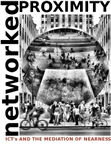
Networks as Metaphors and Models
"Networks have become a powerful metaphor for explaining the social realities of our times. A network, defined minimally, is a system of interconnected elements or nodes, where each node represents an intersection of flows within the network. Everywhere we look there are attempts to explain all kinds of social formations in terms of networks: citizen networks, corporate networks, gamer networks, terrorist networks, learning networks, networks of production, networks of distribution... and so on. The metaphor of the network can be superimposed over just about any form of multiplicity, including non-social ones (for instance, cells in the brain can be described in terms of a network). For the purposes of this study, however, every reference to networks, unless otherwise specified, is meant to allude to technosocial assemblages in which ICT’s facilitate social relations between humans unconstrained by the physical distance between them. If Cognitive Science attempted to explain individual consciousness by adopting the metaphor of the brain as a computer, with its inputs and outputs, Social Science is extending the metaphor a step further by attempting to explain the social in terms of networks—or, in this context, sets of interconnected computers/brains." Continue reading Networked Proximity - Section 1 by Ulises Ali Mejias. Also see Networked Proximity - Introduction.
Posted by jo at 11:49 AM | Comments (0)
December 22, 2006
New World Notes

Gwyneth Llewelyn and the Kuurian Expedition
"...The analogy of “TV vs. theater” was thrown in for discussion— WoW and Everquest are more like TV, where the content is fed to the consumers. Second Life is more like a theatre, especially the ones presenting “interactive performances” where actors meet the public and there is a thin line separating both. Poinky comments: “It's a lot easier to watch TV thanto go a theatre.” This would explain the incredible commercial successes of WoW or EQ.
Interestingly enough, they tend to agree that you need some creativity to be able to enjoy SL.
Grace: “If you are not open to thinking creatively, SL might not be for you.” Frank and Poinky: “What I believe [is]we should define what is creative and what is naive creativity... Here everyone makes different fashions or architectures, by just right-clicking on the target, [hitting] a few buttons, and then move on, but it does not mean they are all interesting because they are original.” ..." From Gwyneth Llewelyn and the Kuurian Expedition by W. James Au.
Posted by jo at 06:45 PM | Comments (0)
November 14, 2006
Otaku

Japanese Kids colonize the Realm of Information and Media
The rise of the Otaku generation is one of the most striking phenomena of contemporary Japan. In Mediamatic Volume 5, issue 3, Gabin Itoh, editor of the Japanese magazine Log In already mentioned the game Otaku, children lost to everyday life by their fanatical enthusiasm for all manner of different computer games in which they immerse themselves totally...
The few common denominators are that otaku are teens or twens, mostly boys who usually wear jeans, T-shirt and sneakers, which might not sound very characteristic but in fashion-crazy Japan it is. They despise physical contact and love media, technical communication and the realm of reproduction and simulation in general. They are enthusiastic collectors and manipulators of useless artifacts and information. They are an underground but they are not opposed to the system. They change, manipulate and subvert ready-made products but at the same time they are the apotheosis of consumerism and an ideal workforce for contemporary Japanese capitalism. They are the children of the media..." From Otaku: Japanese Kids colonize the Realm of Information and Media by Volker Grassmuck, Mediamatic.
Posted by jo at 11:59 AM | Comments (0)
August 16, 2006
Social Media and the Networked Public Sphere
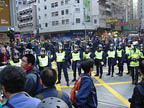
Improving Civic Participation
"Can social media increase and improve civic participation? If so, in what ways? There's a lot being said and written about the subject these days, but it is difficult to get a clear overview of the opinions. I attempt here to collect viewpoints both for and against the premise that social media is creating a better public sphere, and analyze them in the context of what constitutes a public and its antithesis, a mass. In presenting what are sometimes extreme positions within this debate (too idealistic v. too critical), my hope is to begin to understand the reality that lies in the middle, and come closer to understanding social media's potential (and limitations) as a tool to bring about social change.
At a general level, we could say that on one side of the debate are those who believe that social media can increase civic participation and shift the balance of power away from the institutions that currently stand in the way of change. On the other side are those who warn that social media can only offer a reduced form of participation, that it diminishes the value of individual contributions, and that it leaves social systems more prone to manipulation by lowering their intelligence to the minimum common denominator (i.e., stupidity or mediocrity).
Thus, the debate can be framed in terms of whether social media can engender democratic publics that embody an intelligence and capacity for action greater than the sum of its members, or whether it will merely continue to support the production of anti-democratic masses of disenfranchised and alienated consumers. Of course, social media is a big label encompassing many different technologies, and even the same technologies can be applied differently in various contexts. But while features and applications might differ, the people contributing to this debate are obviously focused on the aggregated impact that social media is having on our societies rather than on specific examples of applications." Continue reading Social Media and the Networked Public Sphere by Ulises Ali Mejias.
Posted by jo at 07:37 PM | Comments (0)
August 10, 2006
Regrets
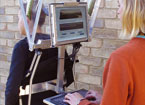
Collective Remorse
Ars Electronica, Hauptplatz :: September 1-5 2006 :: 10:00 am - 8:00 pm :: Regrets--by Graham Budgett and Jane Mulfinger (US)-- are often the conceptual vehicle of self-improving tendencies, but they are rarely communally active in any meaningful way. The Regrets team seeks to intervene and enable such interaction. In particular, remorse is posited here as a positive entity, incorporating recall, reflection, and learning.
Five custom mobile computer units roaming public space in and around a chosen city, community, or event, collect anonymously submitted regrets from the public, gathering and comparing them to comprise a sociological database of contemporary regret. Instant feedback to the individual user based on other contributors' similar concerns is algorithmically generated to 'share the burden'. Random selections of the regrets are made public via locally negotiated sites and existing signage, network, and broadcast facilities. The archive represents a glimpse of a given community at a particular time through the rubric of regret; its results available for future studies.
Posted by jo at 04:30 PM | Comments (0)
July 08, 2006
Embodiment in the New Medias
Andrew Bucksbarg's esssay The New Mediated (Em)Body Is My Others presented at the 2nd annual U of Florida Game Studies Conference, "Video Games and the Alien / Other" is archived (a video of him reading his paper), along with other proceedings, at Gameology, an online resource for the game studies community. Abstract: "The imaginary of the networked, augmented self is unitary, but the practice of this multi-user self, this multiplicity of being in the cybernated, social dataspace is far from a cohesive, organic and maintained system. Networked identity is supplemental, like a link on a page, a page on a site, a node on a network or a server in a circuitous expanse. Not only is dataspace continually invaded by the process of this other, but this realm of media saturation requires and reproduces a myriad of othernesses that shed and collect in archives and databases. These fragments of self assault the perceived purity of identity. Networked identity embodies competing notions of fluidity and fixity, of limitation and expanse, augmentation, embodiment / disembodiment, multiplicity, temporal change and stagnation and otherness. When we think about this reflectance, we are confronted with the problematics of this newly mediated self. We are challenged with the endlessly configurable in menu options and avatars. We engage in the practice of compressing ourselves into blurb-like containers, such as "about me," and profiles that begin as templates of favorite movies and music, which need continual updating. We exist somewhere in the detritus memories of user names and passwords and abandoned email accounts collecting endless amounts of spam. We utilize the reflectance of media to both understand our use of the media and how we are extended through their use. Aside from the freshness and excitement of new media, we are left to wonder how these complex systems lack and how they also delimit us, and in this process, produce something supplemental and other. Archives of identifiers must be created and maintained; they are enacted upon us based upon corporate, gendered or racial components, but they lack in the biological. Their machinic logic is the cement from which we cannot escape and their supplement is the fracture we continuously attempt to heal. Even their evolution into the organic, the attempts at a biologic, are the offspring of this otherness, an artificial life, and an intermediate to our being. This paper presentation will take a playful, creative look at network identity and the thought process of what it means to manage multiple user names, profiles and identities and the fixity of these databases of identifiers and how this multiplicity relates to otherness, as well as intermediate states of being."
Posted by michelle at 08:02 PM
| Comments (0)
"At this year's Ars Electronica/Linz the exhibition Tana-Bana was the huge surprise. It showed media art works created by students of the Srishti School of Art, Design and Technology in Bangalore, India. "Tana-Bana" can be translated literally as "warp and weft" and is meant to evoke the ideal of the "integration of communities or societies". Its maybe most impressive work was "Russell TV", which was shown in the exhibition as an audiovisual documentary. It was a temporary TV station created especially for the huge downtown Russell Market. Viewers were involved in the production from the beginning. The TV-station was distributed within the huge market by cable, and by screens at the venue's entrance and in shopkeepers' stalls, it could be watched by the passers-by and the clients. "Tana-Bana" was curated by Geetha Narayanan, who is one of the founders and the director of Shrishti." From Involvement and Participation: Geetha Narayanan in Conversation with Sabine Breitsameter.
Posted by jo at 10:34 AM
| Comments (0)
CuteXdoom is a mod for the PC game Unreal Tournament 2003 that explores society's obsession with fabricated characters and all things cute, or kawaii. The goal of CuteXdoom is to become a member of the toy worshipping Yumi-Co cult and gain access to their temple by collecting enough toys to present as an offering to the robotic panda guru. (This sort of exploration of society's addiction to cuteness reminds me of Satoshi Kon's compelling anime series Paranoia Agent, which can be seen in the U.S. on [adult swim].) Anyway anime referencing aside, CuteXdoom was created by Yumi-Co, a collective of game designers, illustrators, sound artists and coders that was founded by Anita Fontaine. She worked as the art director and designer for this project and currently works for the Mobile Digital Commons Network in Canada. She is also participating in the Toytakeova exhibit this fall in Australia. I really could go on and on, but I'll end it with this last plug: also check out some of the locative media projects she's worked on: Ghost Garden and Global Heart Rate. [blogged by Carol T Chung on Cool Hunting]
Posted by jo at 10:39 AM
| Comments (0)
"Abstract: One of the interesting properties of mmogs is that of emergent social behavior. This sort of behavior can be characterized as activities that evolve outside of the main purpose of the game. For the past 16 months, I have been conducting an ethnographic study, using methods of particiant observation, interviewing and visual anthropology (in- game screen shots) of inter-game immigration patterns. In particular, I have been looking at the Uru diaspora, a group of players who were made refugees when the Myst-based mmog Uru closed in February of 2004. Uru refugees migrated into other game worlds, creating 'ethnic' neighborhoods, bringing the culture, play patterns, and aesthetic of Uru with them. They created Uru-derived artifacts, and over time, began to create original objects inspired by Uru but integrated into the new worlds they were inhabiting. In this talk, my avatar Artemesia will take us on a tour of some of the areas created by members of the Uru diaspora in different virtual worlds, and discuss their relationship to game design. We may also have the opportunity to talk to some Uru refugees during this live 'in-world' demonstration." From Playing Ethnography: Studying Social Emergence in MMOGs by Celia Pearce. [via] Time: Wednesday, September 14, 6-8pm Bio: Celia Pearce is an award-winning game designer, artist, researcher, teacher and author of The Interactive Book: A Guide to the Interactive Revolution (Macmillan, 1997), and other writings on game design and culture. She has been affiliated with the University of California, Irvine since 2001, where is currently Senior Research Associate at UC Irvine's Game Culture & Technology Lab, through a research appointment at the Institute for Software Research. She is also an Adjunct Professor in the School of Cinema-Television's
Posted by jo at 05:17 PM
| Comments (0)
"In Western culture, artists aren't encouraged to be integral to the social, environmental, or spiritual life of the community. They do not train to engage with real-life problems. Instead they learn to be competitive with their products in the marketplace. All our institutions are defined by this market ideology—none have escaped. "Professional recognition" in the form of brisk sales and positive reviews still remains the primary pattern of thought that structures the internal rhythms of art-making. For a long time now, I have been questioning these premises; anyone who has ever read anything I have written will know that my books are meant as a challenge to our reigning paradigms of economic control and domination. They seek to expose the coercive propaganda of capitalism as a form of spiritual and ecological suicide—and they look at the Big Picture, always with a view to recovering from the estrangements of Western civilization. Instead of art-as-commodity, deprived of any useful social role, I believe that art can help us to participate in what geologian Thomas Berry deems the "great work" of our time: moving from a devastating presence on the planet to a more benign presence. For most of my lifetime, there has been a rigid, dualistic separation between aesthetics and ethics--just as there has been a split between subject and object, and between art and life. In the same way that science aggressively rejects religion, modern aesthetics has rejected ethics, as if the truths of the two realms were somehow mutually exclusive and had little in common. Few people are willing to talk about ethics and aesthetics in the same breath." From Beyond the Disciplines: Art without Borders by Suzi Gablik.
Posted by jo at 08:46 AM
| Comments (0)
"Even when we enter a physical space, we enter a virtual space as well; we cannot experience or comprehend any space without the filter of memory and consciousness. It is also, according to Shields, difficult to 'imagine futures which are other than the way things are.' How can the sociologist help in this process? When the warp and weave of the fabric of our lives becomes visible to us, we are able to see more clearly the values, power structures, rituals, and myths at play even in the supposed 'empty' spaces in which we circulate and live our lives. Then, Shields argues, we have a better understanding of where we, as individuals and as communities, stand in relation to those competing discourses, values, and power systems and how we are defined by them. Armed with this understanding of the virtual spaces in which we exist, we can be empowered to engage, resist and alter them, and perhaps then imagine a future which is just a little bit different than the way things are today..." From Thinking Space: Exploring the Social Dimension by Anne Bailey, University of Alberta's Work of Arts magazine, pp.4-5. [blogged by Rob on Space and Culture]
Posted by jo at 10:43 AM
| Comments (0)
"What we are witnessing today is the acceleration of a trend that has been building for thousands of years. When technologies like alphabets and Internets amplify the right cognitive or social capabilities, old trends take new twists and people build things that never could be built before. Over time, the number of people engaged in producing new things has grown from an elite group to a significant portion of the population; at the same time, the tools available to these growing populations have grown more powerful. Today's technologies of cooperation are practical tools for organizing people and solving problems that we face right now. But they are also harbingers of new forms of social and economic organization -- forms that may help resolve some of the complex social dilemmas that confront the world. So each example of a cooperative technology is also a model for thinking about future social forms as well as future tools; each example embodies principles that can help us think more strategically." From Technologies of Cooperation: A Map To a Toolkit by Howard Rheingold, theFeature, Jun 02, 2005.
Posted by jo at 01:50 PM
| Comments (0)
Performance artist, art educator and Franklin Furnace Alumn Dahn Hiuni has completed new research in a doctoral dissertation titled PERFORMING IDENTITY: THE POLITICS AND PEDAGOGY OF WITNESSING THE SELF. ABSTRACT: Within the heritage of Western art, an historical shift has occurred with respect to representations that address the self. The traditional self-portrait, dominant in the modernist era, has in recent years given way to the postmodern practice of performance art. This study examines performance art as a means of exploring identity. In particular, it investigates the unique strategies that performance artists utilize to interrogate the social, cultural and political forces that construct identity and thus bear upon subjectivity. At the same time, of equal interest to this inquiry is a discrepancy that seems to exist between such contemporary practices and the field of art education. For an exploration of the latter reveals that current pedagogies remain largely faithful to earlier traditions. Drawing on the work of postmodern and poststructuralist theorists, developmental psychologists, critical educators, contemporary performance artists and age-appropriate students, the study formulates a three-pronged theoretical hypothesis in order to explain this historical shift. The conjecture consists of the following: first, identity may be viewed more accurately as performative; second, giving and witnessing testimony has political and pedagogical implications, and; third, such practices generates criticality, which in turn cultivate personal agency. Central to the verification of this hypothesis, the author presents an original work of performance, analyzing the ways in which it corroborates itThrough this combination of methodologies, the study finds that, because of its unique use of the body as a site of discourse, and due to its ability to pose rhetorical metaphors that elicit greater criticality, performance art may yield a richer art of identity. Because of these uniquenesses, the study further finds that performance art may bear particular relevance for adolescents and young adults. As this population is known to grapple with specific issues surrounding identity formation-including race, gender, religion, sexual orientation and other forms of difference-an emphasis on performance art may constitutes particularly valuable pedagogy. For through it, students examine, verbalize, critique and renegotiate their perceived discordances within their respective socio-political realities, and thus are likely to cultivate a greater sense of agency. The study concludes that such findings expand the possibilities of an art of identity, beyond those afforded by traditional strategies. As such, it recommends that these findings be incorporated into current art education studio pedagogy. Dahn Hiuni may be reached at dahnhiuni[at]aol.com
Posted by jo at 09:08 AM
| Comments (0)
"Thus, the motivation for the text, as Nakamura repeatedly remarks, is the observation that "[t]he Internet is a place where race happens" (xi); consequently, to explore the methods of just how race happens, Nakamura deploys the neologism of cybertype to "describe the distinctive ways that the Internet propagates, disseminates, and commodifies images of race and racism" (3). In particular, she explores how race factors into both the cultural layer of the Internet (i.e., content) and the computer layer (i.e., infrastructure) of computer networks (2). Therefore, in this single-authored, book-length study of race and cyberspace, Cybertypes explores many angles, including the role of online avatars, the images of corporate advertising, the function of e-mail jokes, and representations of cyberspace in science fiction." From Graham J. Murphy's review of Cybertypes: Race, Ethnicity, and Identity on the Internet by Lisa Nakamura. [via WRT] Lisa Nakamura is Assistant Professor of Communication Arts and Visual Culture Studies at the University of Wisconsin, Madison. She is the author of Cybertypes: Race, Ethnicity, and Identity on the Internet (Routledge, 2002) and a co-editor of Race in Cyberspace (Routledge, 2000). She has published articles on cross-racial roleplaying in Internet chatspaces, race, embodiment, and virtuality in the film The Matrix, and political economies of race and cyberspace in publications such as the The Iowa Journal of Cultural Studies, Women's Review of Books, Unspun: Key Terms for the World Wide Web, The Cybercultures Reader, Reload: Rethinking Women and Cyberculture, Domain Errors! Cyberfeminist Practices, and the Visual Culture Reader 2.0. She is working on a new book entitled Visual Cultures of the Internet, forthcoming from University of Minnesota Press 2006. Lisa Nakamura is giving the talk Subjects & Objects of Interactivity: Racial Formation and Media Convergence at UC Riverside’s Global Interface Mellon Workshop, this Wednesday (May 25) at 5pm. She’ll discuss the interface-like logic of Jennifer Lopez’s 2000 video “If You Had My Love.”
Posted by jo at 11:06 AM
| Comments (0)
GORmeans an open hook in Korean and it is often used to represent human relationships. GORI.Node Garden--by Jee Hyun OH--explores the node of privatized networks and expresses the image of fastening or loosening the relationship to your will. The biggest difference between Privatized Network and Social Network is the maintenance of relationships, how one maintains whom one takes care of. In GORI, the garden represents the social network you belong to and the flowers symbolize your privatized network nodes -GORIs- which you are growing. As a gardener, you decide which GORI from your mobile contact list you will plant and grow. It could be somebody from either your phone list or somewhere else. A flower planted at the edge of the garden, starts to grow when you exchange messages and it moves towards the centre. When it moves, it vibrates. The growth speed and location of each GORI is set by the frequency and duration of the calls. The growth speed and planted location determine the value of the scale and pitch of music that plays when gardeners water the gardens. [blogged by Regine on near near future]
Posted by jo at 09:42 AM
| Comments (0)
"In this essay I present ongoing theoretical work, developed throughout 2004, the year I took up the position of 'lector' at the Hogeschool van Amsterdam. I will focus on three conceptual fields: the relation between multitude, network and culture, the art of collaboration and 'free cooperation', and finally present elements of a theory of 'organized networks'." The Principle of Notworking by Geert Lovink [via NOEMA]
Posted by jo at 08:18 AM
| Comments (0)
"Introduction: Identity plays an inherent role in defining our social interactions. In face-to-face communication, many physical cues exist with which to convey our identity and our intentions. In the realm of computer-mediated communication, identity becomes a much more ambiguous conception. Traditional platforms for online interaction are largely defined by language and text, stripping away many of the visual cues that we are used to. What are the ways in which visual identities are manifested online? This paper will explore some key issues related to visual identity in virtual communities, with a focus on avatars and webcams, and how traditional notions of identity may be transformed by these emerging modes of online representation." From Visual Identity and Virtual Community by Karyn Y. Lu, Atopia: Polylogic E-Zine.
Posted by jo at 03:44 PM
| Comments (0)
SNIF, or Social Networking in Fur, is a project from John Maeda's Physical Language Workshop at the MIT Media Lab. The idea is built on the age old notion of petworking-- meeting people through your pets. In their own words: "SNIF presents a hardware/software architecture that aims to capture pet social networks and other pet-related information as pets and their owners explore their communities." Read paper [PDF]; watch movie [Quicktime] [via Josh Rubin: Cool Hunting]
Posted by jo at 10:38 AM
| Comments (0)
The Digital Cities Project is a collaboration between several Canadian research insititutions exploring digital technologies inthe urban environment. As part of the Mobile Digital Commons Network they presented at the Pervasive and Locative Arts Network [PLAN] workshop at the ICA in London on February 01-02. The project research basis: Over the past two decades, several nations have embarked on a “digital” strategy to become key players in the new information economy. Interestingly, despite the heralded innovations these technologies promise, most nations have pursued a similar use of space and place to build isolated multimedia cities. Our research project investigates and analyzes four such multimedia initiatives beginning with the Cité Multimédia and Technoparc in Montreal. This project investigates traces of the “digital city” and its networks, from multimedia districts to virtual environments and mobile devices. The role of technology in the city has been an important focus of cultural research. While earlier studies have concentrated on urban infrastructure such as electrification and transportation routes, new communications media have given rise to technological systems and networks that re-order the city. Through the workings of new communications media, the social and technological apparatus of cities is transformed, altering the terms of urban theory and representation. This type of feedback loop not only expands the site of the "interface" from computer terminal to the city, but also multiplies types of input to encompass both physical and virtual data. Our research asks what would happen if the feedback loop were inverted, such that the city controlled the data, and the data's performance were always measured against the changing tides of urban life. Such a circular interplay challenges the discrete status of data, and instead requires a process of continual re-situating and adjustment within urban context. In this sense, we are reversing the logic of the feedback loop, which attempts to maintain system equilibrium in the face of disturbance. By privileging urban dynamics as the "command signal" that guides the data, the database becomes doubly urban, both documenting and being shaped by activities in the urban environment to form an expanded feedback loop.
Posted by michelle at 11:56 PM
| Comments (0)
"...Terms such as "mapping," "borders," "hacking," "trans-nationalism," "identity as spatial," and so on have been popularized in recent years by new media theories’ celebration of "the networks"—a catch-all phrase for the modes of communication and exchange facilitated by the Internet. We should proceed with caution in using this terminology because it accords strategic primacy to space and simultaneously downplays time—i.e., history. It also evades categories of embodied difference such as race, gender and class, and in doing so prevents us from understanding how the historical development of those differences has shaped our contemporary worldview. ..." Read full article Questioning the Frame: Thoughts about maps and spatial logic in the global present by Coco Fusco, In These Times, December 16, 2004. Responses to the article culled from Locative and nettime: Responses to the article culled from locative and nettime: Date: Thu, 16 Dec 2004 22:26:27 +0000 hmmm.... I just wish she would mention some of the mapping projects she's talking about. She really seems to have a narrow understanding of what artists are doing with locative media. She seems to suggest that one of the problems is that the artists have too much control over the social picture that the maps portray. And other artforms don't? I'm going to have to read this through a couple of times to make sure I really understand what she's saying but after a couple of scans it really looks rediculous and I almost get the feeling that she regrets not being a "hacker". Pall Ewen Chardronnet wrote: well, she always comes with interesting art critics and post-colonial discourses, but use same dialectics each time. I remember reading same dialectics in her critics on "art and science" hipe and "critical art ensemble trial" hipe. And now the "locative media" hipe... You can be sure there will be a critic on "pervasive arts" and "space arts" soon, etc. and of course better if those arts are done by white male artists Date: Thu, 23 Dec 2004 17:08:14 +0100 (CET) As a critic it's important to read your peers, and try to assess the pertinence of your own work in the mirror of theirs. So I was curious to read Coco Fusco's recent article on mapping [www.inthesetimes.com/site/main/article/ questioning_the_frame]. However, I must say that her continuous assertions of cultural authority leave me feeling highly ambivalent. On the one hand, the threads of historical memory she brings up are extremely welcome. On the other, her unwillingness to engage with current conditions and projects tends to reduce the past to a complaint: Why isn't it the present anymore? It's true that the raw fact of being older than the majority of the people in a given crowd can make you feel uncomfortably lucid. When I went to a conference on so-called "locative" or GPS-based media at the RIXC center in Latvia, I found most of the projects quite naive, developing a few stylistic traits of situationist psychogeography in the absence of any geopolitical critique of power relations, or any philosophical critique of instrumental rationality. In effect, a Cartesian worldview has been built into the computerized technology of graphic information systems, which are undergirded by megaprojects of military origin, or what I call "imperial infrastructure." But rather than just giving a disciplinary lecture with all the answers stated in general terms, I tried to show how changing conditions had made the once-subversive traditions of psychogeography quite superficial, to the point where the aesthetic forms the artists were using seemed to render the very infrastructure of their projects invisible. And when I recently published that paper out of context in Springerin, I took the time to name all the artists and projects in question, so as to establish the precise referents of the critique [springerin.at]. I wish Coco Fusco would make that kind of minimal effort, as it would bring her sharp observations into contact with actual projects, and open up a space of possible transformation. More to the point: When I began my work on mapping, about four years ago now, as a direct result of involvement in demonstrations against the policies of the WTO and IMF, I too felt that the most important reference was the history of the Third World movements of national liberation, in their relations to the Western civil rights and new left movements of the 60s and 70s. In an early text that was finally published in the book Moneynations, I tried to show how the very concept of the Third World, and then above all, the reality of the Movement of Non-Aligned Nations, acted to open up new imaginary and real spaces within the dominant bi-polar map of the Cold War [http://2002.memefest.org/en/defaultnews.cfm?newsmem=15]. I asked the question whether the emergence of the World Social Forum in Porto Alegre could be compared to the Bandung Conference in 1955. Obviously, the answer was that it could not: both because the current antisystemic movements do not (yet) have the strength that Bandung represented, and because the operative modes of opposition may well have changed fundamentally since 1955. The global importance of the Third World movements lay in the new kinds of international solidarity that they helped provoke. But something important remains unstated in Fusco's references to these movements, and this is the fact that the major links that tied them to the First World do not exist anymore (nor, indeed, do the movements themselves, for we are talking about specifically national movements in the period of decolonization). One of these links was an aspiration to create a non-Stalinist form of communism, according to the examples given by the successful Cuban and Vietnamese guerrilla insurgencies, and also by Yugoslav self-management (one must remember that the non-aligned movement came officially into existence in Belgrade). Another powerful link was the notion of cultural authenticity, or inherent difference from the Western norm, as a liberating foundation upon which newly independent nations could be built. This Third World concept served as a basis for the struggles toward a multicultural society in the First World. Today, however, the egalitarian aspiration to a self-managed communism has no objective touchstone in reality, leaving those who feel its lack in a deep state of ideological disarray. At the same time, the notion of cultural authenticity has been largely usurped by nationalist or fundamentalist projects which, although they have fortunately not eradicated all work towards equal rights in a multicultural society, have nonetheless made it very difficult to raise the banner of cultural or ethnic difference as a rallying-point for international solidarity. Instead of relying on the old internationalist slogans (Third Worldist or proletarian), the transnational movements of dissent that gathered strength throughout the 1990s tried to use the communicative power of the discourses of human rights that had gained currency in the 80s, largely through the resistance of people in the former Eastern bloc to totalitarianism, and in Latin America to dictatorship. It was subsequently necessary, in the late 90s, for the Western participants in these transnational movements to take the further step of putting their own bodies on the line, of taking direct action against the international economic institutions, in order to go beyond the abstract character of the human rights discourse. This was a way of responding, in the overdeveloped countries, to the sacrifices of the many "IMF riots" that had been held, often at great cost of life, in what was now being called the Global South. Anyone who believes this step was taken by middle-class white kids acting on internet fantasies, in the absence of direct input from social movements around the world, quite obviously didn't go to any of the demonstrations and paid no attention to the planning process or the reports. The point, however, is not to suggest that a brief flare-up of worldwide protest has brought about any substantial change. It is rather to recall what a difficult and long-term effort is really needed, both to grasp the way that transnational state capitalism now functions, and to articulate large-scale resistance. When Josh On [www.theyrule.net] or Bureau d'Etudes [http://utangente.free.fr/index2.html] make their complex charts of contemporary power relations, one can be assured that the cold and abstract character of the results is very painful to them. I can testify, particularly in the second case, that they are acutely aware of what is missing from such documents: namely, some affective indication of resistance from below, who does it, how they work and why. What has been achieved in such cartography projects, however, is a contribution to the very large-scale effort to rebuild a critical grasp of the oppressive forces that create the dominant map of the world. This kind of power-mapping is a necessary prelude to any effective resistance or counter-proposition. The fact that the difference between such efforts and the current military maps used by the Pentagon does not appear clearly on American TV is hardly something you can blame the artists for! There is a difference between general culture critique and constructive critique directed toward people carrying out specific projects. Somewhat like Coco Fusco, I often wonder why contemporary artists appear so broadly unable to infuse the dominant map with representations of - or even better, direct links to - the many and diverse dissenting groups and alternative philosophies that are now emerging in the world, or that have remained active over decades. Unlike Coco Fusco, however, I don't think it's useful or necessary to berate artists today for not having been born earlier. The great philosophical frameworks of national liberation and egalitarian self-management that were able to articulate far-flung resistance movements in the past are inoperative in our time. The urgency is for real individuals of all generations, on all continents, to put their heads and hearts together and create new articulations. The specific job of writers and organizers is then to give those articulations conceptual clarity and popular currency, so that they can effectively challenge the absurd world-views presented on American TV. As to artists, for whom the naked power structures of the contemporary world must now be quite visible, I encourage them to delve more deeply into the diverse efforts that are being made to resist the imposition of a homogeneous control structure on the entire world. This requires looking outside the boundaries of class, ethnicity and nationality, as certain artists and intellectuals of previous generations effectively did. To live up to the great examples of the past then means imagining something quite different for the future. Need it be said that certain kinds of imagination can serve as the first steps towards a transformation of reality? Date: Fri, 24 Dec 2004 04:13:32 +0000 Hi Brian, I read both Coco Fusco's piece and your response with interest and a little bemusement. You addressed the lazy generality of CF's rant very well, and touched on a couple of things that provoked me to write back: Firstly, can we please get away from technological determinism? Yes, the use of military-industrial technology can be problematic, but that criticism in your text is as widely and as targetlessly applied as Coco Fusco's. Many people are using these technologies (GPS/mobile phones/internet/high-tech gizmos), the social movements that you use as your reference points as much as anyone. In fact, it's not like we really have the choice about using these technologies , being subjects in a technocracy... and it's only out of the appropriation and reuse of these technologies that critique can form and attempt to reconfigure the social and political relations that produced them in the first place. Even on a non-technical level, using these technologies and observing their effects and deployment has been instrumental in the development of a number of political discourses: information and affective labour, precarity, [cyber]feminism etc. The critique develops as much from practice as practice develops from critique. example: London Free Map - http://uo.space.frot.org/?node=LondonFreeMap http://chinabone.lth.bclub.org.uk/albums/misc/london_free_map.sized.jpg Jo Walsh and Schulyer Erle have been working on the 'London Free Map' This project encourages participants to walk, drive, cycle or skate through city streets with GPS units and then use the 'traces' of points representing latitude and longitude that these devices generate to help create publicly licensed geodata. They are also working on adapting existing open source software to enable people to annotate and extend these maps in a very flexible way. The example linked to above shows straight lines representing GPS traces made wandering the streets of Limehouse, East London, an area undergoing a huge urban regeneration process in preparation for the proposed Olympic games in 2012. The labeled points are the locations and names of approved planning permission applications made to the London Borough of Tower Hamlets in the last five years, automatically retrieved from the council's website and plotted onto a scanned out-of- copyright historical map of the area from 1916. This is just one potential use of the London Free Map, a way of visualising physical and historical changes to a space undergoing a huge social and economic upheaval. The potential for further uses and the development of new, as yet unimagined maps from this project seems evident. Secondly, I found the distinction between these technologically specific, less overtly political projects, and the 'power-mapping' practices of (the wonderful) Bureau D'Etudes and many many others to be a bit thin. I know you share their frustration at having to use the language of power to map power, but the problem is not just in the inability of this form to represent the fertile heterogeneity of the social movements. 'Power mapping' deals in the currency of power, and its representational structure can reinforce the dynamics of the relationships it represents. More worryingly, the unnerving coherence of these representations can also become ised easily - the currency of power made visual, or (worse) 'data visualisation' knits neatly into artistic and authorial currencies and relationships that can become as reactionary and totalising as the military-industrial technologies you were warning against earlier. I know you know this, your descriptions of the playfulness of the Bureau's maps illustrates the path they choose out of this bind : 'solidarity with aliens'. But people using similar or derivative techniques seem to embrace the solemnity and darkness of their maps without having the escape pod provided by their humour. What encourages me about initiatives like the London Free Map and many of the projects in the orbit of the 'locative media lab' is that they often work, on a very basic level, to avoid totalising representations. To some extent this is emerging as an informal agreement on technologies, open Semantic Web standards and other esoterica that I'm not really equipped to explain. Also, many of these projects are based on public workshops, working with people and groups on producing representations of themselves, spaces, movement and relationships. Of course none of this is inherantly interesting. Public workshops and 'open' technologies carry their own wealth of dead ends, vices and travesties, but they certainly are politicised - and politicising, in a very different and more subtle sense than that of 'power maps'. The contingency on input from the map-users is the most obvious distinction between these forms of mapping and the two examples of 'power mapping' you mentioned. Of course this aspect of 'participation' in the making of the map is just as worrying in terms of which currencies it evokes, auteurship and the 'framing' of 'public use' in the interests of pseudo-ehthographic artistic value creation etc. etc.. But the locative media lab's engagement with corporations, the way some of it is like cheap corporate R&D in exchange for getting to use fancy devices, the links with 'community groups' funded and instrumentised by arts bodies, and with governments for use of geodata is all messy, difficult, and suspect, but necessary if the technology, and the discourse are going to develop. This probably warrants more examples, which I'm too tired to start with now. I guess the problem is that criticising something is difficult because you have to explain why, whereas blithering pleasantries about things you like is not so demanding. keep up the good work brian! X Saul. Date: Sun, 26 Dec 2004 23:48:54 -0800 >>Firstly, can we please get away from technological determinism? Yes, the use of military-industrial technology can be problematic, but that criticism in your text is as widely and as targetlessly applied as Coco Fusco's. Many people are using these technologies (GPS/mobile phones/internet/high-tech gizmos), the social movements that you use as your reference points as much as anyone. In fact, it's not like we really have the choice about using these technologies , being subjects in a technocracy... and<< Why no choice? If no choice, isn't that technological determinism to the extreme degree? It is an incremental process -- each mile you drive onwards in your fossil-fuel burning device, or crank open the thermostat in the house, that drives the social system further onward in its dominance. (it propels the US military machine a bit further in its desparate mission to secure the true power/energy-base of the social structure that is is an integral part of). each time you don't do those things de-poweres that same system. each time you watch one minute of centrally organized media you give that structure more power. each time you cross social-structural boundaries and engage an Other human directly, you depower those ordained structures. hmmm. JH Date: Mon, 27 Dec 2004 11:32:20 -0000 Hi Saul, Hi Brian, let me first make some sort of disclaimer: I am happy that Coco's article (which I have not read, but can roughly imagine what it contains) triggered this discussion about locative media which was long overdue. I think many people have felt uncomfortable with the unarticulated political 'content' or 'meaning' of locative work but have not spoken in public. One reason for that might be that they felt, as I did, that there is a lot of potential in that field and that the (mostly young) people involved did not deserve to be bashed for all their good intentions, even though those intentions sometimes gave relatively weak results. Finally the lid has been blown off and that is a good thing. I now do neither want to argue for or against Saul or Brian but just throw in my two-pence. I also have to say that writing something really meaningful about that whole area would take at least a day and I simply don't have that time right now. So please excuse the immaturity of my words which are quickly written in a sort of email improvisation which I guess was once the spirit of internet discussions which is now often sadly missed. Saul said at the very beginning of his reply: >> Firstly, can we please get away from technological determinism? What does this statement mean? It is indeed important to 'get away from technological determinism'. But what this statement should not mean is that we should not consider or discuss technological determinism. Saul continues: >> Yes, the use of military-industrial technology can be problematic, I would go further and say that 'can be problematic' is not strong enough. It _is_ problematic, always. The instrumental power that is contained in those technologies is a central issue of our time, and by 'our time' i do not only refer to the last couple of years or so but to the last 50 or even 100 years. Therefore I think such statements about technological determinism and military-industrial technology should not be used to quash any discussion about those issues. Those issues should exactly be the starting point of any discussion about 'locative' projects and indeed media art and net art projects. This is where the media art community has failed over the last 20 years which I was able to witness as a grown up person. It is one of the big failures of that community and possibly one of the reasons why it made so little real progress over that period of time. When I say 'real progress' I of course don't mean technological progress, of which we have seen plenty, but a progress in the social use of those technologies, in their accessability and applicability, in their ability to have an actual impact on the improvements of the situation of people. I am arguing from a point of view of art that is based on a definition of art whose main reason to be is political. Such an art should be able to transcend the current power system. By 'transcending' i don't refer to metaphysics but to the actual socio-historic situation. In this situation and its projection of possible futures it should open up spaces, spaces for alternative ways of thinking, spaces that offer people different opportunities, for instance to realise alternative viewpoints outside the dominant system, or, more practically speaking, to be able to develop ways of resistance and at least limited ways of autonomy. Of course we cannot ask too much from art and the current level of oppression is so high, the ideology of technological determinism so deeply entrenched that it has become very hard to imagine anything that makes a real difference. But at least people should try. I am afraid I could not see that in most locative projects and in most of the discussions that have been had about the topic so far. Most of the projects (I am aware that such generalisations without reference to particular projects are always lame but simply have not the time to go through bookmarks and list archives now) simply continue the master trope of the narration of hypermodernity, which is about expansion of technological mastery, coupled with economic growth, all under the banner of 'usefulness' for the people. This is how new communication technologies are being advertised. The mobile phone gives you freedom, it improves your social life, you can use it to form Rheingoldian Smart Mobs and if you put a little FOAF into it you can even realise alternative politicised virtual communities with it. Of course you can do all this stuff, it is even true. But by doing so, you are not leaving the established playing field, a field that has been established by the forces of techno-rationality in the service of capitalism. I know it is a bit unfair to mention that here but the most significant 'locative' projects in that regard are Blast Theorie's mobile games. The critical content of those projects is nil. The whole thing blew up at futuresonica last year but most people could not read the signs on the wall. Of course their projects are resourceful, maybe well programmed, maybe even entertaining. But they are fundamentally affirmative of the world we live in and completely one-dimensional. Now, to come back to the core question: it is simply wrong to ask if we are allowed to use military-industrial technologies. of course we should use them (and I do that by simply typing an email) but if we do it matters how we do that. do we contribute to the disguise of the political content of those technologies and thereby continue the positivistic narration of expansion and 'usefulness'? or do we use them to expose that which is always subconsciously present, that in this system, as Herbert Marcuse said 40 years ago, power is transferred into technological systems and that our dependency on those system makes us to their reified subjects? It is a general trait of this society that the powers that be try to cordon off the political. The positive side of things (technological things, gadgets, gps, pda's) gets highlighted but not what comes with it, not this hard to pin down element of power that has become nameless and faceless because Now, coming back to locative per se, I think Brian is right to say: "In effect, a Cartesian worldview has been built into the computerized technology of graphic information systems, which are undergirded by megaprojects of military origin, or what I call "imperial infrastructure." Maybe he ment to say Geographical Information Systems (GIS). GIS combined with GPS and so forth truly signify the victory of Cartesian space over real space. Of course this victory is only a fake victory and never a final victory but it defines the current state of the arts in 'mapping'. Is it therefore forbidden for artists to use GIS? Of course not. The project by Jo Walsh and Schulyer Erle that Saul mentions, 'London Free Map' is a very good example. It is maybe not an art project but that does not matter. It tries to democratize GIS power, democratize in the sense of direct bottom up democracy and not fake vote rigging mind manipulating democracy (oh, that word, can someone suggest a better one?). It is experimental and utopian, it relies a lot on FLOSS and is probably difficult to use for people who are not tech-savvy, but that does not really matter at this point; it does not entertain in the way Blast-ed projects try to but that is effectively its strength. It involves fun, but of a different kind. We need more projects of this kind and we need a discourse that is better able to differentiate between projects that open up those other spaces and projects which simply fall into the technological deterministic trap. I hope we can begin conversations that are critical and constructive and not about our personality disorders of which we all suffer to a certain degree, necessarily, because they are a function of that system we are subjected to. In this sense I agree that a lot of the 'psychogeography post-situationist' talk sounds naive. But at least it shows a desire to get away from Cartesian space and to reconceptualize the highly regulated spaces we live in. It makes a lot of sense to link FLOSS, art and the history and presence of liberation struggles, but that debate needs updates and rejigging too. Hoping to be able to talk about those issues in a more elaborate way soon and also hoping to hear from other people now regards Date: Tue, 28 Dec 2004 02:21:22 -0800 ...Executive Summary: While studying locative media projects, a computer user realizes the value in talking to people. Extended Commentary: A romance of the aesthetic of the internet. Be somewhere, anywhere, it doesn't matter, "jack in" to the internet, and you're home, with your office and your contacts and connections. The presently inhabited city, be it Riga, Ljubljana, or Vancouver, is like wallpaper or decor in a restaurant. The principal interaction with the world is through the internet, and the information available there, the rest is somehow peripheral. So naturally when we approached the ability to make computing mobile and location aware, there seemed to be an answer of integration; finally the drift and nomadism would be informed and fulfulled with the power and potential of the network computer. All your revolutionary fantasies come true. Except the devices are retarded and complicated and expensive; they don't work properly, and they make you into a Steve Mann cyborg, someone more appopriately dressed for a mid 1990's DefCon hacker fair in Las Vegas than any part of life in public. We tried to simplify the gear and determine what it was supposed to do, which was connect us to the network, make us contextually aware within that network, and informationally aware within that spatial context. The equipment had to be "naturally human", so that it is still possible to interact with the environment and the local culture without handicap. No cyborg head displays or cybergloves, or star-trek tricorders. It also has to be inexpensive and uncomplicated and break-proof. A beautiful natural language interface was developed (using selective evolutionary algorithms, no less). Billions of client terminals connected to a global information network have been deployed, planet-wide, that use this natural language interface. They're called people. Sitting behind my computer and obsessed with the internet for ten years, I totally missed the obvious connection that local people are connections to the whole network, the network of all information connections which includes the internet but also "old Joe Smith" with whatever he's got to offer. It's the same reason why I haven't needed a watch since I was 15 - someone around me always knows the time. The connection to the network is not limited to a GPS satellite signal reciever and a 2.4GHz wireless internet supercomputer laptop. Rather it's just a link to the next node with different information that what you can access on your own. The easiest, most locative way to access that network is by talking to people, and if these studies are urban, there's going to be people. Forget WiFi and GPS. Ask for directions. Ask the nearest person, or if you're aesthetically driven, ask the nearest good-looking one. If they don't have the answer, they might know someone who does, or can suggest an alternative. If they don't speak your language, they'll likely direct you to someone who does. Maybe that's should be obvious. But as a bedroom caveman computer hack, to look around and find that this perfect system has already been implemented is amazing. It's multi-modal with multiple redundancies. Ubiquitous. Reliable. All-weather. Fuckable. Maybe an internet legacy of the military paradigm has poisoned our preconceptions about the reliability and desirability of technology vs people. But if we are nice and friendly and not locally despised imperial soldiers, we don't have to bring all our knowledge in a computer. We can talk to the nearest person. When I was in an busy new space I formerly looked around and saw great potential for overlaying great collections of information and data or media texture in location, if we could develop the system to realize it. Now I see that this network is already in place, mobile info nodes are walking all around, ready to be engaged, connected to vast networks of people and information. Standard APIs. It's amazing. Sometimes you have to ask a bunch of times, even before you realize the right question to be asking. But if the information is there, someone has it, and you can find it. The mention of technological determinism and political action, brought up in the context of locative media, seemed to make this "amazing" revelation relevant again. It has been called a serious political action to find ways beyond the gap between people in the very technically-focused and alienated population. Techno-fetish locative media projects made me realize how important and powerful it is just talking to people. OK! cheers Date: Wed, 29 Dec 2004 14:15:32 -0800 (PST) In response to Geert's request, below is my commentary that was published in IN THESE TIMES recently. The comments were based on my lecture at the School of the Art Institute of Chicago in November, 2004. The series is entitled: MAPPING / CULTURE / BORDER / HACKING / and the school's description of the series is: "This lecture series examines the work of artists, artist-collaboratives, and film/video makers whose works address or proceed from shifts in articulations of global culture, politics of the border and dilemmas of transnational or diasporic identities--identity as a spatial concern. Special attention will be given to artists who use the gesture and organizational logic of mapping, cartographic sciences and the grid to locate identity as well as its displacements." I found this description so baffling and overladen with jargon that it prompted my response. I have not had a moment yet to respond to Holmes's post. I found it a bit surprising that he would locate a response to an article in a left-wing Chicago newspaper on a list-serve with a primarily European readership (of his allies, I would add). A decision to locate his response HERE as opposed to THERE seems more like a rallying cry to his nettime readership than an address the substance of my argument or to the public in Chicago, a city with a long and venerable history of community and labor organizing, activist media, and radical black politics. Coco
Posted by jo at 10:19 AM
| Comments (4)
Dr. Reinhold Grether's network research | netzwissenschaft site maps the "emerging infrastructures of all (inter)net research endeavours. net.science as an anthropology of connectivity is trying to overcome the constraints of specialist method transfers on net matters. the protuberance of technical networks necessitates a professionalization of human net knowledge. neither the isolation of concepts as in basic research nor the encapsulation of processes as in applied sciences will ever be able to adequately describe the complex autopoiesis of networks. net.science is undoubtedly developing into a scienza nuova of its own right." Check out his Mobile Art and Virtual Performance research areas.
Posted by jo at 04:45 PM
| Comments (0)
The former Mayor of Bogotá, Antanas Mockus, is featured in this article in the Harvard Gazette archives. Mockus became well known and loved for his experimental approach to governing the city. His techniques included: employing mimes to shame jaywalkers and dangerous drivers, as pictured on the left; distributing "thumbs up" and "thumbs down" cards so that citizens could critique each other's actions without engaging in a war of words; and creating a "Night for Women", where women went out on the town and men were asked to stay home or carry "safe conduct" passes. Mockus' intriguing methods acknowledge that existing in public is a kind of performance, and this acute sense of being an actor in public is exactly what makes the mimes who shame you for jaywalking work - social pressure inspires us all to be better performers, and citizens. (Posted by Michelle Kasprzak)
Posted by at 12:51 PM
| Comments (0)
'love one day' was a real one-off action through time and space, presented live online and later as a cinematic video installation. Two people from two distant parts of the UK started a long journey to London. They met in a hotel bedroom and within 24 hours of starting their journey, they left. 'love one day' explored the communication between two people whose anticipation of love was heightened by the unique circumstances of their journey. It documented the emotions, thoughts, observations and behaviour of two 'matched' individuals as they traveled towards each other and met one day. 'love one day' investigated psychological motivations, how we communicate and interact with others and how we are affected by our environment, space and time. A unique 'love one day' dating website was created. This allowed people to submit their personal profile and browse/chat amongst other candidates looking for the perfect match during one month. The website took on a similar format to that used by online dating agencies with specific questions designed to recruit two protagonists for a journey to meet in London. 'love one day' was publicised and promoted through online listings, press and 'satellite venues' (public spaces and institutions supporting the project) as well as the website's established visitors and target audience. Two people from a selection of 'matched' couples via the 'dating website', were interviewed and chosen to become the main protagonists of this experience. People prepared to accept the role of protagonist by embarking on an emotional and physical journey to meet someone they have never met in a hotel bedroom were sought. They were chosen on the basis that they made a good love match. The two selected protagonists were each given a mobile phone to continue their communication by phone, in text and images so they could get to know one each other a little more before their journey started. No direct contact was allowed until they met for the first time in the hotel during filming. The entire journey was filmed and the telecommunications were documented live on the love one day website. The protagonists later met with a relationship psychologist to feedback about their experience. 'love one day' is a project of completely naked.
Posted by jo at 01:01 AM
| Comments (0)
from UPOC Networks:
Posted by at 02:17 AM
| Comments (0)
Plurality of Othernesses
September 27, 2005
New on AudioHyperspace
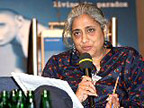
Involvement and Participation
September 19, 2005
CuteXdoom
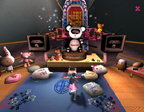
Society's Obsession with Fabricated Characters and All Things Cute
September 12, 2005
Playing Ethnography:
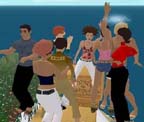
Studying Social Emergence in MMOGs
Location: USC's Robert Zemeckis Center for Digital Arts (RZC), Room 201 Zemeckis Media Lab (ZML)
3131 South Figueroa Blvd./2nd Floor
Interactive Media Division at University of Southern California, where she held previous positions as a visiting researcher and adjunct professor. Ms. Pearce's 20-plus year career as an interactive media and attractions designer includes: Creative Director for Iwerks and Evans & Sutherland's award-winning 24-player attraction Virtual Adventures: The Loch Ness Expedition, and Purple Moon Friendship Adventure Cards for Girls. Clients have included: Walt Disney Imagineering, Universal Parks, BBH Exhibits, Lego Toys, and the Jerde Partnership. Recent curatorial projects include: Mapping the Unfindable (Winter 2004), a retrospective exhibition on the work of Norman Klein, and ALT+CTRL (Fall 2004), a festival of independent an alternative games, both at UCI's Beall Center for Art & Technology. She is currently developing an environmental game with the Buckminster Fuller Institute.August 25, 2005
Beyond the Disciplines:

Art without Borders
August 01, 2005
Rob Shields
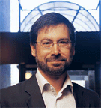
Thinking Space: Exploring the Social Dimension
June 03, 2005
Technologies of Cooperation: A Map To a Toolkit
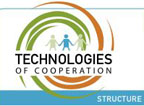
Tools to Alleviate Suffering...Liberate...Create
PERFORMANCE ART EDUCATION
Performing Identity
May 24, 2005
Cybertypes: Race, Ethnicity, and Identity on the Internet

Online Stereotypes
May 20, 2005
GORI.Node Garden
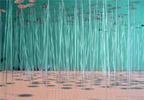
Cultivating Networks
May 16, 2005
The Principle of Notworking

Networking/Notworking?
May 13, 2005
Visual Identity and Virtual Community

From Avatars to Webcams
March 21, 2005
SNIF
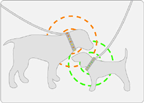
Social Networking in Fur
February 20, 2005
digital cities project
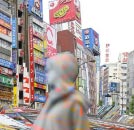
urban database as feedback loop
December 29, 2004
Questioning the Frame
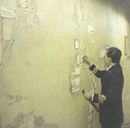
Thoughts about maps and spatial logic
From: Pall Thayer
Subject: [Locative] Questioning the Frame
To: locative@x-i.net
E.
From: Brian HOLMES
Subject: [Locative] A Reply to Coco Fusco
From: Saul Albert
Subject: Re: [Locative] A Reply to Coco Fusco
To: Brian Holmes
From: John Hopkins
Subject: Re: [Locative] A Reply to Coco Fusco
To: locative@x-i.net
From: "Armin Medosch"
Subject: Re: [Locative] A Reply to Coco Fusco
it has been inscribed in, is contained in the technological system.
armin
From: karlis
Subject: [Locative] Don't be shy
To: locative@x-i.net
karlis
From: coco fusco
Subject: December 27, 2004
netzwissenschaft
![]()
Emerging Infrastructures of All (Inter)net Research
December 24, 2004
Performing the City for Social Change
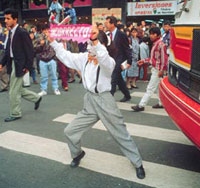
Using Performative Techniques to Get a City Under Control
October 15, 2004
Love One Day

Time, Space, Love
August 31, 2004
sms for love
same text marriage
On eve of the Republican Convention, Upoc Networks announces upcoming marriage of couples who met via text messaging on its mobile community service, Upoc.com. Read the press release.
